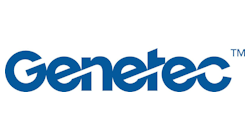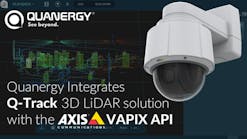This article originally appeared in the September 2021 issue of Security Business magazine. When sharing, don’t forget to mention Security Business magazine on LinkedIn and @SecBusinessMag on Twitter.
After more than a year of lockdowns, masking, and physical distancing, businesses are reopening and people are gradually returning to normal routines. Yet for many large venues, such as stadiums – poised to open to thousands with the start of NCAA and NFL football seasons this month – the great reopening comes with some pretty big challenges.
Depending on where you are in the country, public health authorities may still be discouraging people from gathering in large numbers, which puts more onus on venues and event organizers to invest resources in crowd control and pedestrian flow. From an employer standpoint, workplace safety rules may also require more oversight to ensure employees and contractors are maintaining physical distance from customers. Maintaining a register to enable contract tracing in the event of an outbreak is yet another requirement that adds new layers of complexity as well.
When you are managing a stadium that holds 50,000 to 100,000 people, managing pedestrian flow requires more than sticking a few arrows on the floor. Stadium managers must consider the whole customer experience, from parking their car, finding their seat, to bathroom breaks and snack bar visits, and develop new procedures to streamline getting from A to B while limiting lineups and crowds.
Despite similar environments, customer needs and behaviors are not necessarily the same for all kinds of programming. Breaks may be at halftime, between periods, or between acts. Sports fans may get up more often to buy beer and hot dogs; families attending children’s shows may make more trips to the bathroom. This means managers must create plans not just for their venue, but also for different types of events and/or audience groups.
Most large venues have already deployed digital camera systems, access control systems, license plate readers and other technologies to monitor guest safety and secure sensitive areas. Those that have integrated all these systems into a unified dashboard are discovering these tools are handy for more than just security.
Video Analytics
Venues are looking at other ways in which they can combine data from a variety of systems to enhance and customize the customer experience. For example, rather than having people standing in line for 20 to 30 minutes while waiting to scan tickets and pass through security, some venues are using people-counting analytics within digital video surveillance systems to minimize wait times. The software can be configured to notify the appropriate staff person if the line exceeds the acceptable number of people, so they know to open another gate or redirect the crowd.
Camera analytics can also identify the direction of foot traffic by the ratio of faces among the heads. This can be useful to alert staff if people are moving towards restricted or closed-off areas, for example, so that a security person can intervene. The camera can also be programmed to use edge analytics to trigger a security alert if a person crosses into a specific zone.
Mobile Transforms Credentialing
Rather than check physical tickets, many venues are moving towards contactless electronic “boarding pass” style credentials. Many are looking at ways in which they can integrate ticket credentials with access to specific areas such as VIP suites, beer gardens, specific viewing areas, etc. so patrons can access the appropriate zones based on the type of ticket package they purchased.
Some venues have also leveraged smartphone apps to help customers to find more efficient paths through the venue. They may suggest parking lots that are closer to the zone where they are seated, for example, to reduce milling around inside. In some cases these apps also allow customers to order their hot dogs and popcorn from their seat, for delivery or pickup, to reduce crowding around concession stands.
With a robust access control system, electronic tickets and employee access cards can be scanned or tapped when entering or exiting specific zones. This is another way to manage crowd control, as well as to improve safety by limiting access to certain areas. In the event of a security incident, or if contact tracing is needed for reasons of public health, this data can also be used to identify who was present at a specific place and time.
Creating ROI
Technologies like these are not simply handy during events; in fact, marketing is getting involved in funding some of these systems because the data is valuable to indicate where people gather and how they behave. Security features like heat mapping, for example, can indicate where people gathered and when so that marketing teams can identify strategic placements for banners or operations managers can implement new tactics to reduce congestion at future events.
As the technology develops and systems become even more integrated, expect even more innovation in this space. It all adds up to a much more robust, responsive, and proactive approach to security and public health protocols, which will actually improve visitor experience in the end.
Visitors are not the only ones who benefit from this kind of proactive, smart-technology approach to venue security. Employees, contractors, and suppliers, and even the surrounding community, can feel safer knowing that venues are doing all they can to keep the building and parking lots safe. For example, venues can establish emergency call stations around the perimeter so that guests can easily report problems or call for help if they feel unsafe. Other practical applications include things like using access control technologies to stagger deliveries and limit unnecessary physical contact by opening gates remotely.
Video surveillance analytics, license plate reading, access control, intercom systems, heat mapping, and other tools are essential tools to gather data on guest behavior and ensure sensitive areas are secured. What brings it all together is a unified physical security platform.
The Value of Unification
With a unified system, venues can more easily sort through all that data to find actionable insights. Integrators serving the large venue vertical should recommend a unified software solution that allows the end-user's team to create multiple dashboards that update in real time. This provides a clear view of what is happening right now, not just what is in the rearview mirror. Realtime mapping is another handy feature to make it easy to get a bird’s eye view of events and visitor behavior in and around a connected venue.
With this approach, the organization's security teams can be deployed more efficiently as well. The person in the control room becomes like the maestro of an orchestra. Each team member on the ground can have their part to play, with their own dashboard on a smartphone or tablet to empower them to monitor and respond within their zone.
While there is no doubt that the pandemic has hurt the hospitality and event industries, some of the innovations created to mitigate COVID risks are likely to become part of the new normal because they have the lucky side effects of streamlining operations and reducing common customer pain points. That means fans can spend more time enjoying their fun outing with family and friends, and less time waiting in line, worrying about safety, or fighting their way through a crush of people.
Rick Taylor is Genetec's National Director, Public Sector. He has nearly a decade of experience in the security field, including positions as District Manager at both UTC Fire & Security and GE, and as VP at Esscoe for the company’s security practice. Request more Info about Genetec at www.securityinfowatch.com/10213771.




